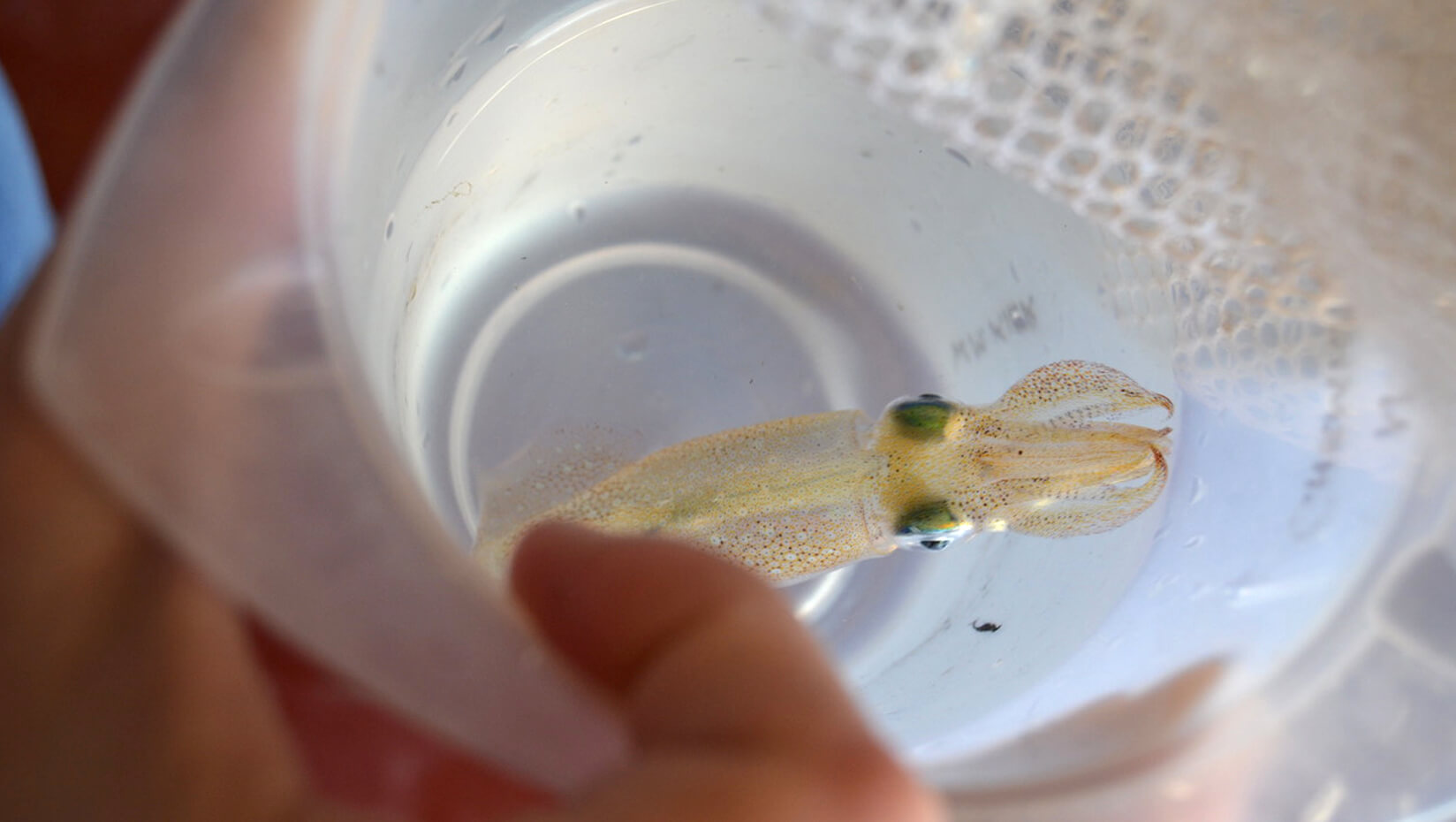
Flexible squid movement focus of summer research at DMC
A visiting team of researchers studied features of muscles that control squid maneuverability this summer at the University of Maine Darling Marine Center.
Squid move to capture prey, elude predators and compete for access to mates.
The idea for the research sparked five years ago during a conversation among scientists Ian Bartol, Paul Krueger and Joe Thompson.
“Squids are fascinating animals to study because they use two separate but coordinated propulsive systems to swim and turn — a pulsed jet and complex fin movements,” says Bartol, an Old Dominion University professor who specializes in biomechanics of marine animals.
“Together, these systems afford squid incredible locomotive flexibility, allowing them to navigate complex habitats, change direction rapidly, or even ascend/descend vertically.”
The scientists examined how muscle physiology changes with growth, and whether the changes affect squid maneuvering performances.
“In addition to understanding general principles of muscle physiology that apply to all animals, perhaps the principles discovered in squids can also improve performance for remotely operated vehicles,” says Thompson, a biology professor at Franklin & Marshall College in Pennsylvania.
The collaborative project approached mobility in Atlantic longfin squid (Doryteuthis pealeii) from different angles.
Bartol’s lab applied hydrodynamics to study fin motion.
Krueger, a professor of mechanical engineering at Southern Methodist University, provided expertise in movement of fluids around fins and arms of squid, as well as jet locomotion.
And Thompson’s undergraduate interns — Rashi Anand and Hallie Keatley — looked at muscles of the fin and arms.
“There is so much you can gather from invertebrates,” says Anand, a biology major at Franklin & Marshall College. “Even though the anatomy of humans and squids are different, you can apply so many things from invertebrates to human body.”
Initially, the most challenging parts of the research for Anand and Keatley involved doing dissections, preparing muscle tissues and understanding the electronics used to measure muscle contractile properties.
“There was a lot of trial and error,” Anand says.
Thompson, who for 13 years has conducted research at the DMC, says he enjoys seeing students metamorphose from novices into skilled, competent scientists.
“I’ve worked at a few different marine labs,” he says. “The DMC is unique because the community is small enough to allow you to get to know everybody but large enough to make connections with people studying questions in basic and applied science. There aren’t a lot of places where you can have all this variety and a strong sense of community.”
